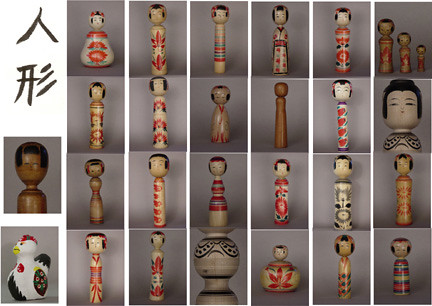
WaSabiDou Antiques & Folk Crafts now offers guided tours of
Japan, custom tailored to your specific interests: i.e. folk crafts,
gardens, cuisine, spiritual or historic sites, etc. Of course, our
specialty area is folk crafts and sites related to the Folk Craft
Movement. In addition, short spiritual pilgrimages may be added on to
your tour at cost. We can't profit from this portion of your tour.
A sample 12-day itinerary might include the following sites and
activities: Tokyo; Japan Folk Craft Museum, Art Museums, Dining in a
"kura" (storehouse,) Dinner in a restaurant filled with original
storyboard paintings by Akira Kurosawa, and more....off to Mashiko,
pottery town with an estimated 400+ kilns for a visit to Shoji Hamada's
Mashiko Reference Museum, plus pottery galleries galore and a chance to
try your hand at throwing your own pot.....Kyoto; temple and garden
tours, excellent Zen Buddhist cuisine, museum home of potter Kawai
Kanjiro, and more...stay a night at a Buddhist monastery and learn
the connection between Buddhism and the folk craft
aesthetics...finish with a visit to Kamakura, home to more than
120 shrines and temples just an hour by regular train from Tokyo.
For those wishing a spritually and physically refreshing experience
prior to returning home, take a 2-day walking pilgrimage of the 33
Kannon Temples in the Kamakura area. You need not be a practicing
Buddhist to benefit from this short journey to deeply spiritual sites,
several hundred years old. But, a respect for the practice of
pilgrimage is necessary (vegetarian diet, giving alms, etc.) Your guide
is happy to discuss the history of the various sites visited, or
to quietly be your walking companion. As stated above, this
addition to your tour is at cost.
Tatsuo Tomeoka has several years experience as a professional
tour guide, mainly for Japanese guests visiting the United States and
Western Canada. Custom tours and translation services have been created
for business visitors, artists, architects, Buddhist clergy,
and travellers just wanting to shop till they drop! He has also
provided several tour experiences in Japan focusing on
mingei-related craft sites and Buddhist temples. He has lived and
worked in various cities and towns in Japan, including Mashiko, Tokyo,
Yokohama, and Kumamoto.
He currently resides in Seattle, Washington with his wife,
Apple; daughter, Shino Claire; and son Yumeji Clay.
He looks forward to showing off some of his favorite spots in
Japan, and possibly discovering new sights, with you.
Remember, our tours are custom-designed and highly flexible (number
of travelers, dates, itineraries.) The best tour will be the
one that we create together!











